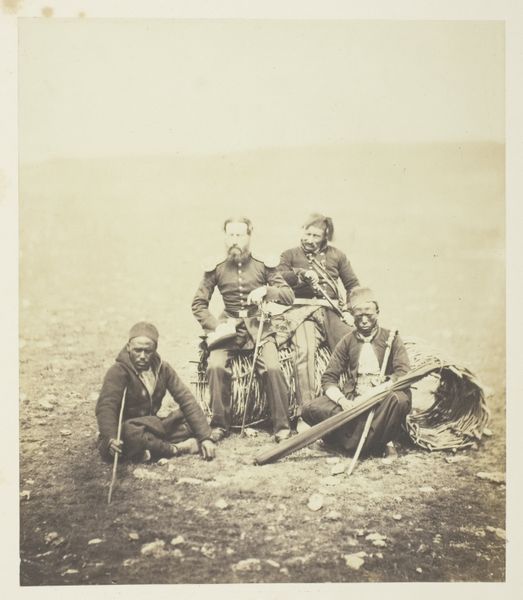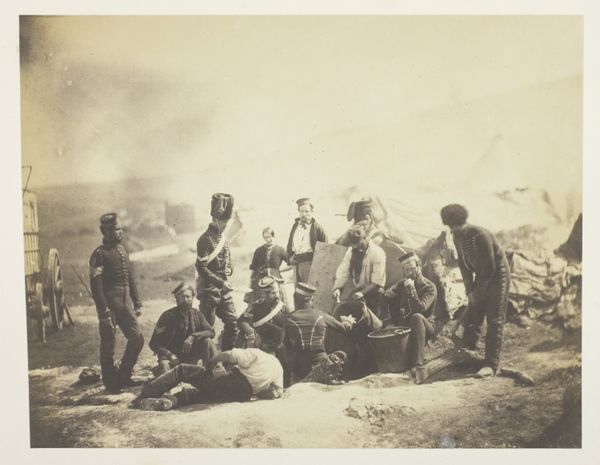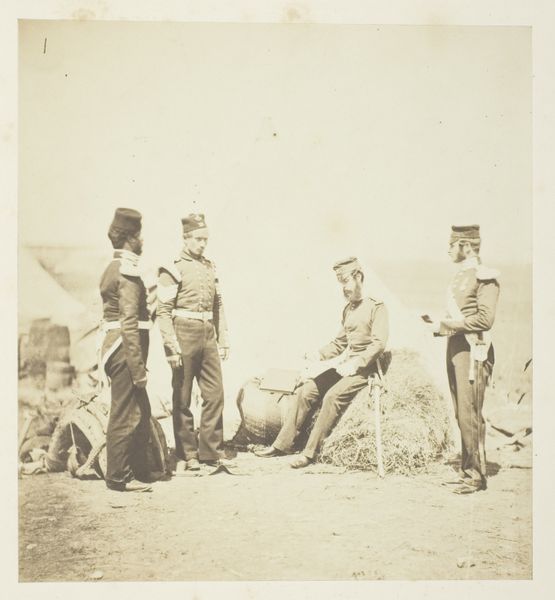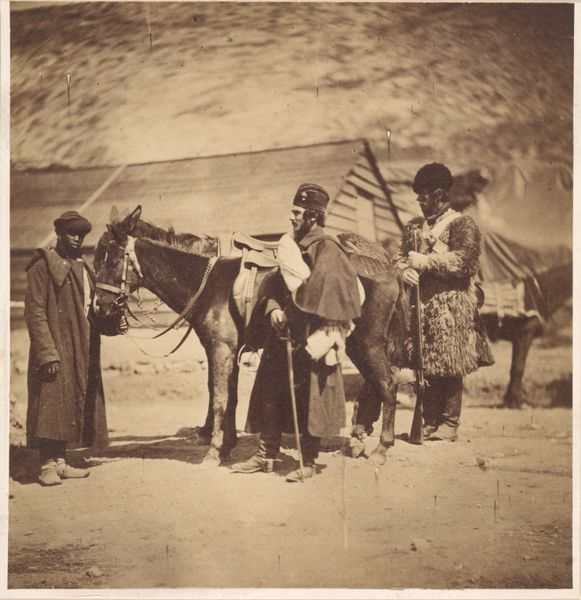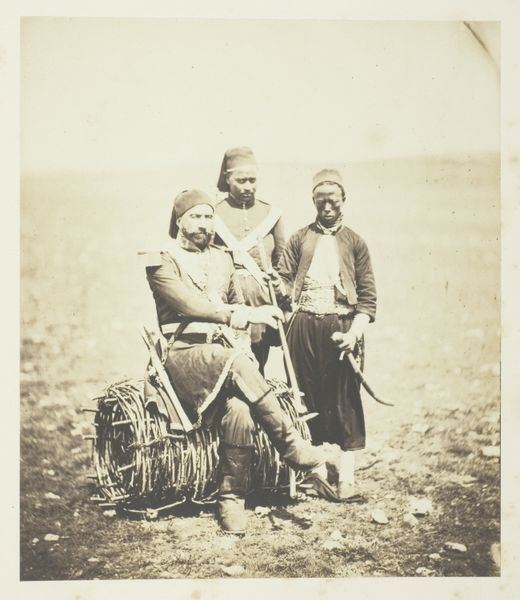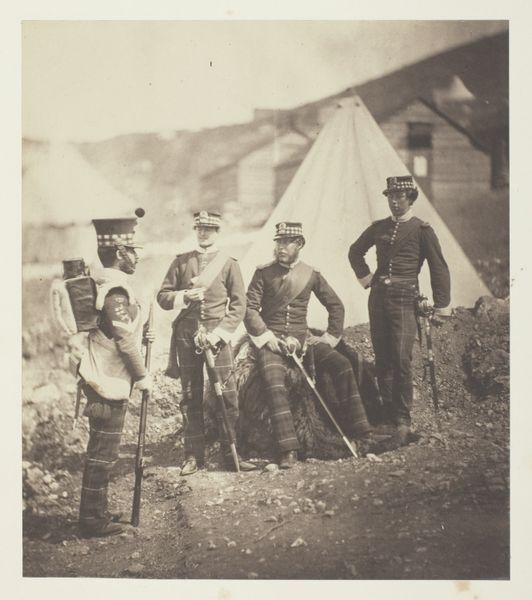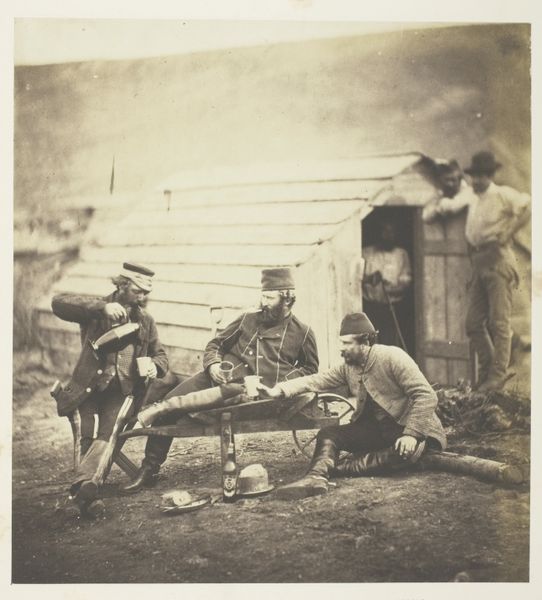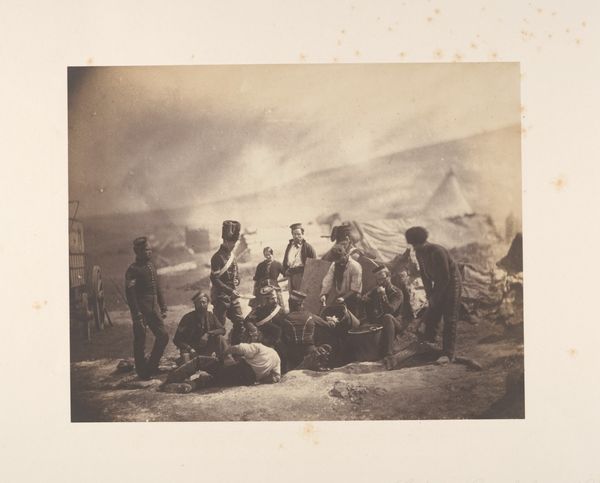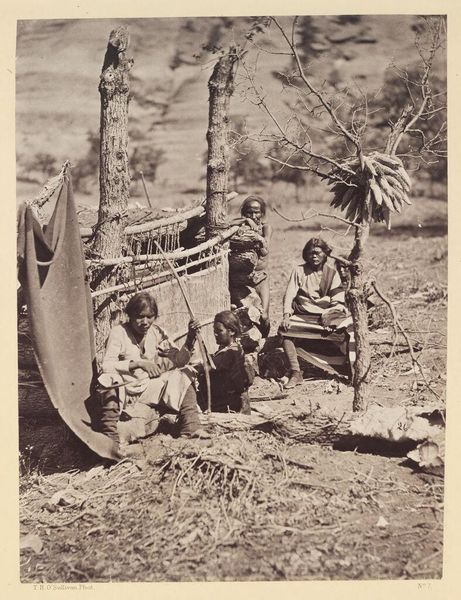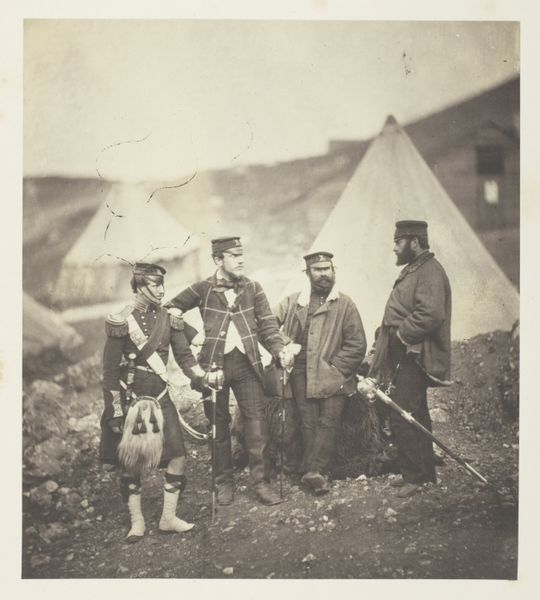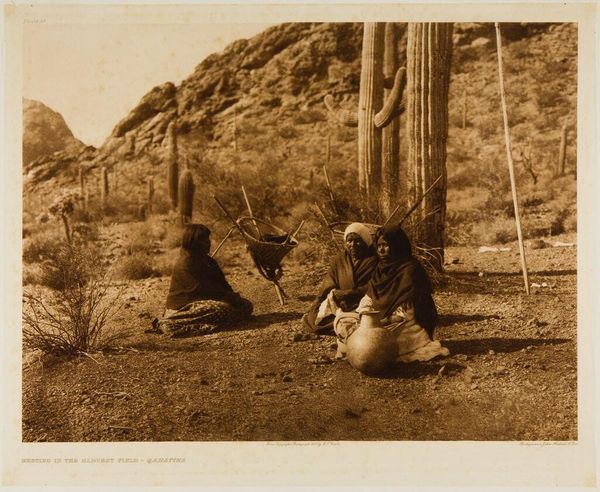
Dimensions: 18 × 16 cm (image/paper); 58.9 × 42.5 cm (mount)
Copyright: Public Domain
Curator: Here we have Roger Fenton's "Men of the 77th ready for the Trenches," an albumen print created in 1855. It resides here at The Art Institute of Chicago. Editor: My first impression is the somber mood. It’s a strikingly still image; the tones are subdued, the composition loose, with a kind of quiet resignation hanging in the air. Curator: Fenton made this during the Crimean War, a time when photography was just starting to be used to document events like war. What’s really interesting is the British government actually commissioned him. Editor: And one could read the somewhat staged composition as romanticizing these men. They appear contemplative, not as though actively engaged in brutal combat. Notice how the diffuse light softens the scene. Curator: Precisely. There's a careful balance here. Fenton couldn't directly show the gruesome reality because of censorship and technological limitations, such as the long exposure times. He navigates that through suggestion and, as you noted, romantic idealism. He aimed to stir patriotic feelings back home in Britain, showing duty and preparedness. Editor: The varied textures really stand out; the rough cloth of their coats contrasting with the smooth surfaces of the rifles creates an intriguing juxtaposition. And the men are arranged loosely from the left of the frame to a central resting figure, and there are even small blurred areas near the horizon, creating depth and suggesting vastness. Curator: Fenton also had a keen eye for hierarchy. Notice the men aren't presented as anonymous soldiers; they're distinct individuals, and they still conform to certain roles that one might assume based on their clothing and position. Editor: What lingers with me is the ambiguity. There’s a staged quality, yet these men, their eyes and body language, give a glimpse beyond the performative aspect. It's a delicate interplay between artifice and reality. Curator: Exactly, that tension speaks to the power of early war photography—its capacity to be both propaganda and a raw glimpse into history. Fenton captures more than just a moment. Editor: I see an understated meditation on mortality, conveyed through formal qualities and careful, deliberate organization of a few figures in a spare setting. Curator: Fenton's work here marks a significant moment in how we've come to understand and consume images of conflict, even to this day.
Comments
No comments
Be the first to comment and join the conversation on the ultimate creative platform.
